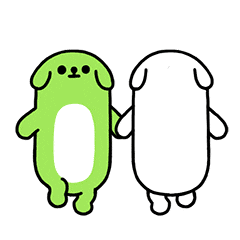Today I’m proud to announce that I’m one of the recipients of the 2019 ArtFund New Collecting Awards. It’s a great honour and, over the next two years, I will be thinking in public – here and elsewhere – about the questions, and findings, that my work will generate.

Digital design is one of those things that is difficult to pin down, but is involved in many of our everyday interactions, from the way we talk to each other to paying for our lunch. It moves between the physical and the digital, the concrete and the abstract, the visible and the invisible. It’s woven into our everyday lives in ways we don’t often realise, yet we notice when something stops working in the way it is designed to.
From software and web design, to the internet-of-things, videogames to social media, digital design has had a profound impact on the way we understand the world and each other. It’s important for us at the V&A to work on pulling together narratives and objects that talk to our understanding of digital design, from process to context to consumption, so that we can better represent our contemporary lives together.
The ArtFund New Collecting Award will give me the opportunity to meet with creators and industry, as well other collecting institutions and archives, to work out some of the challenges we will face. What is the digital object? What should we collect and why? How do you collect something like Instagram? What do we need to do to take care of it all?
We’ve made significant steps in the Design, Architecture and Digital (DAD) department to take these challenges and run with them. Our collection has been growing over the years, and we’re ambitious to build it further. Digital design is in so many of our other collections departments too, you’ll find it in furniture and in ceramics, where digital techniques are transforming the means of production and manufacture. DAD’s collecting outlook has a strong interest in design and society, how we live and engage with design every day. It’s vital, therefore, that we learn to understand the role of digital objects, from choosing what to collect and how, to its preservation and eventual display and access. These are all areas that need to be investigated, and the Award is part of a wider ambition to find out what questions to ask, and how to make the answers useful for us at the V&A and for the rest of the museum sector.
With this time, I also want to better understand the digital designer today, from the small-scale studio or individual, to the thousand-person design teams of Apple, to see what we as a museum can do to shed light on their design processes and experimentation, and to bring examples of significance into the collection. I’ll also be talking to industry about how they work, and how we can represent the impact of the heavy hitters – Google, Facebook and Twitter, plus many others – on our lives.
The acquisition of WeChat led DAD to think not only about what digital objects could be, but who we might need to work with in order to collect them. My colleagues, Brendan Cormier and Corinna Gardner, worked with Tencent to create a version of the social media platform that wouldn’t automatically update the software – so that it wouldn’t crash the app when it was turned on. The team also created a video, in the same portrait format as a mobile phone, to explain some of the many ways that the app could be used, so that for our collection, but also in our display at the V&A, we would get a sense of the interactions that take place on one of the world’s most popular social networks.
Working with industry directly isn’t the only way to collect the major players in digital design, but it’s one that needs plenty of exploration, especially if we want to be able to tell people in decades to come how influential the design of Twitter was, or what it was like to be a teenager on Snapchat. For reasons of intellectual property design from bigger companies isn’t so easy to collect. I’d like to spend this time trying to figure out the first steps in knowing what makes a useful, rich, object-led conversation that will benefit audiences now, as well as in the future.
Finally, there’s the ‘us’, the users, who are central to so much of our understanding of digital design. What we make of the design we’re given is almost never expected, and often goes beyond the intentions of those who created it. It’s what makes working in this area so exciting, as there’s so much to explore, and I’m looking forward to seeing where that takes me. Technology and digital design are inherently, and deeply, human, so recording this for others through the things we talk about – the objects (whatever they may be) – is an important step in understanding the impact they have had, and will have, on the world around us.
This will be the first blog post of many. I’m writing this with the hope of inviting in other voices into the V&A’s ongoing conversations and to share this research with not just colleagues at other museums, but everyone. We all lead lives mediated by digital design and culture, whether it’s the phones in our pockets and the filters we use on Instagram, to our financial markets and systems. Now is the time to collect it, before it’s moved on or impossible to grasp. I’ll let you know where this leads me next.
Image: Bubble pup animated gif sticker, created for use in the WeChat app.. Museum no. CD.304:11-2017. © Victoria and Albert Museum, London


